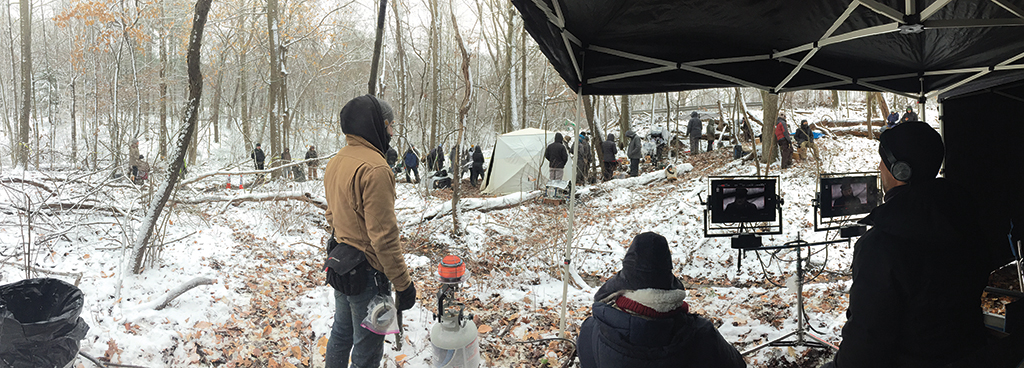By IAN FAILES
By IAN FAILES

With the amount of visual effects shots and the complexity inherent in visual effects production, there seems to be an increase in the number of ‘specialized’ visual effects supervisors who specifically work on set.
Typically operating hand-in-hand with a VFX data wrangler and production visual effects supervisor – and sometimes taking on either or both of those mantles themselves – these on-set VFX supervisors must always be on top of busy and ever-changing shoots, carefully balancing the wrangling of crucial VFX data with allowing for a smooth overall production.
Here, four visual effects supervisors with significant recent on-set experience share their stories from shoots on projects including Dickinson, The Umbrella Academy, An American Pickle and Raised by Wolves.
REFLECTING ON THE ROLE OF AN ON-SET SUPERVISOR
Molecule VFX’s Charlotta Forssman has worked as a visual effects supervisor on many television series, most recently Seasons 1 and 2 of Dickinson. Collaboration is one of the facets the visual effects supervisor says is most important in her role on set.

“What I really love about my job is the collaboration I have with all of these different department heads. On Dickinson, it was really fun to divide and conquer with the production designer in terms of what they’re going to build as a world and where we were going to take over.”
Another key part of Forssman’s on-set VFX supervision role is the technical aspects related to data capture, including photographic reference, LiDar, lenses, takes and a wealth of other things. “You need to become best friends with the camera crew so that they give you all the measurements you need,” suggests Forssman, “and of course grab what you can yourself. From the set, I want the post producers, the editors and the studio heads – whoever it may be – to know that they have me on the ground as their eyes.”
The VFX duties on Dickinson include realizing the period aspect of the show – it is set in the 19th Century, so it requires era-appropriate buildings and environments to be built as practical and CG sets. For aspects like this, Forssman advises that on-set VFX supervisors should consider utilizing tools that are readily available to them. “There’s an app called OldNYC, which is great if you’re shooting period stuff in New York City. It’s a map app, where, say if you’re standing on a particular street corner in New York, then you can bring up what old buildings used to be at that corner. I’ve impressed a few people on scouts with that app.”
“Our Pogo days [on The Umbrella Academy] were always big! Brandon Haber, our top-tier data wrangler, and I were constantly tweaking our practice to be more efficient. Re-configuring the database, setting up the witness cameras to sync with the main unit camera, building a rig to hold our Pogo model, with the ball and color chart – dividing and conquering to get what we needed.”
—Jesse Kawzenuk, Associate Visual Effects , The Umbrella Academy
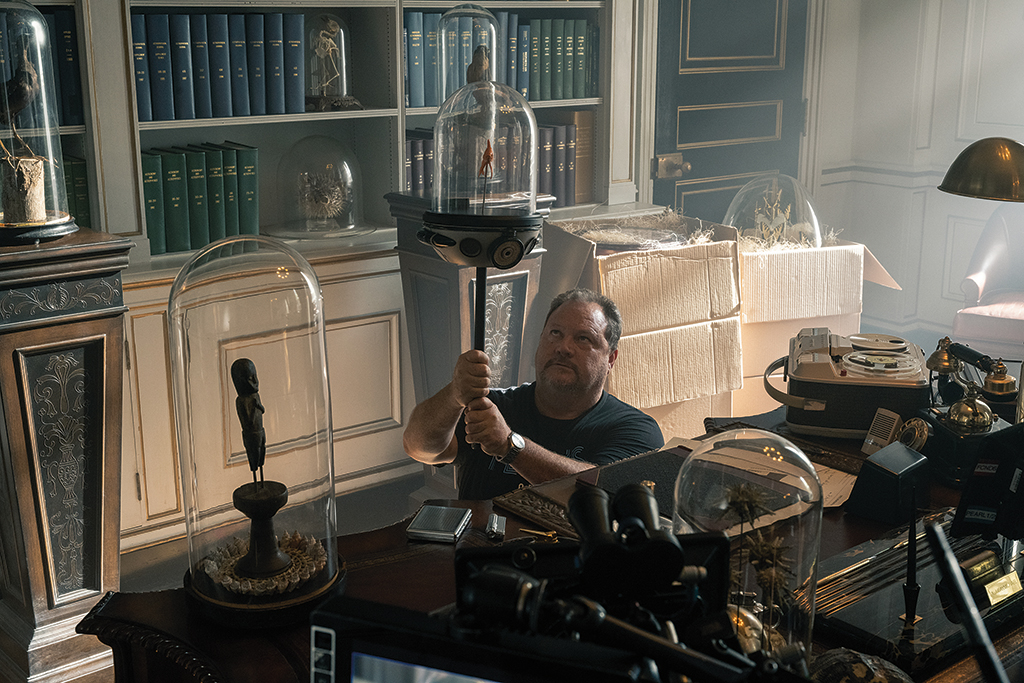
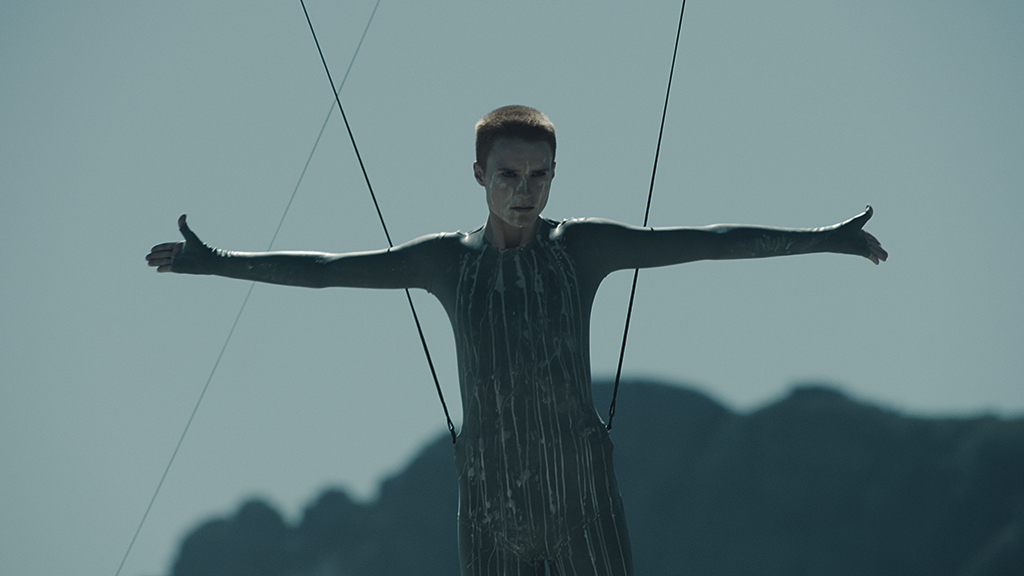

CHIMPANZEES, SNOW AND TALKING FISH HEADS: UMBRELLA ACADEMY
Having worked as a data wrangler with The Umbrella Academy Production Visual Effects Supervisor Everett Burrell on Season 1 of the show, Jesse Kawzenuk was elevated to Associate Visual Effects Supervisor on Season 2. The work on Season 2 was varied and complex.
“We would get hard notes for every VFX shot which would include camera measurements – height, tilt, focus and all the camera settings,” shares Kawzenuk. “For bigger CG type shots, we bust out our chrome ball/gray ball, also known as the ‘CBGB.’ This along with an HDRI gave us our lighting reference, which helps our artists months later bring Pogo or AJ Carmichael to life. Everett was ultimately the mastermind behind everything, and we were there to make sure he and the folks in post got everything they needed.”
In terms of the most complex on-set shots for Season 2, Kawzenuk identifies scenes involving the intelligent chimpanzee Pogo. “Our Pogo days were always big! Brandon Haber, our top-tier data wrangler, and I were constantly tweaking our practice to be more efficient. Re-configuring the database, setting up the witness cameras to sync with the main unit camera, building a rig to hold our Pogo model, with the ball and color chart – dividing and conquering to get what we needed.”
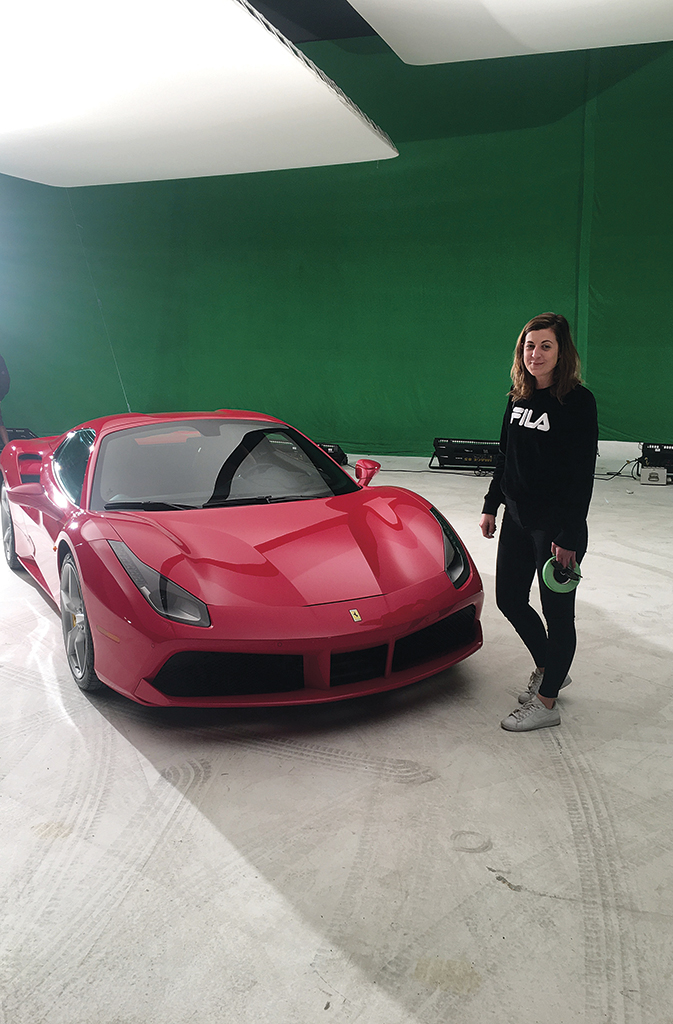
Another complex aspect of the shoot related to unforeseen snow that fell at the location for the season’s final episode, but then melted just as quickly. “A decision to use the practical snow quickly changed to adding VFX snow,” details Kawzenuk. “Luckily the special effects team was incredible and we were able to pull together whatever SPFX snow and real snow we had to contain the action within the frame for the day. Snow was melting before our eyes, we were using wheelbarrows to shovel snow into the frame. Everett went to work and the artists that spent countless hours on these shots made it seamless – it turned out great!”
“You need to become best friends with the camera crew so that they give you all the measurements you need, and of course grab what you can yourself. From the set, I want the post producers, the editors and the studio heads – whoever it may be – to know that they have me on the ground as their eyes.”
—Charlotta Forssman, Visual Effects Supervisor, Dickinson
SEEING DOUBLE FOR AN AMERICAN PICKLE
Adam Rowland was the Overall Visual Effects Supervisor on An American Pickle, a role that involved a significant presence on set to make the twinning shots of the film (where actor Seth Rogen played two characters) possible.
One of the toughest aspects of the on-set work for An American Pickle proved to be element shoots for face replacement shots, such as one that sees the two characters played by Rogen escape on an electric scooter.
Here, Rowland decided that the best way to acquire an accurate element was to combine the opposing movements of both the scooter and camera and build it into a single moving camera, also allowing Rogen to be kept stationary and for full control of the lighting.
“We spent the morning setting up the camera and dolly, a greenscreen behind an array of 3D tracking markers, and changeable light-cover,” explains Rowland. “We also set multiple eyelines for Seth to hit in a specific timing so that his head would pivot and turn in an identical manner to the double whose head we were replacing.
“We worked with a stand-in,” Rowland continues, “finessing the eyelines, rehearsing the camera move and making incremental alterations throughout the morning. By the time Seth stepped on set in the afternoon, we were ready to take him through what was required of his performance, and managed to get the whole thing shot in a few takes. It’s probably worth mentioning that this shot never made it into the final film! It was temped up for a test screening, and looked very promising, but ultimately the whole scene was omitted when the ending of the film was changed.”
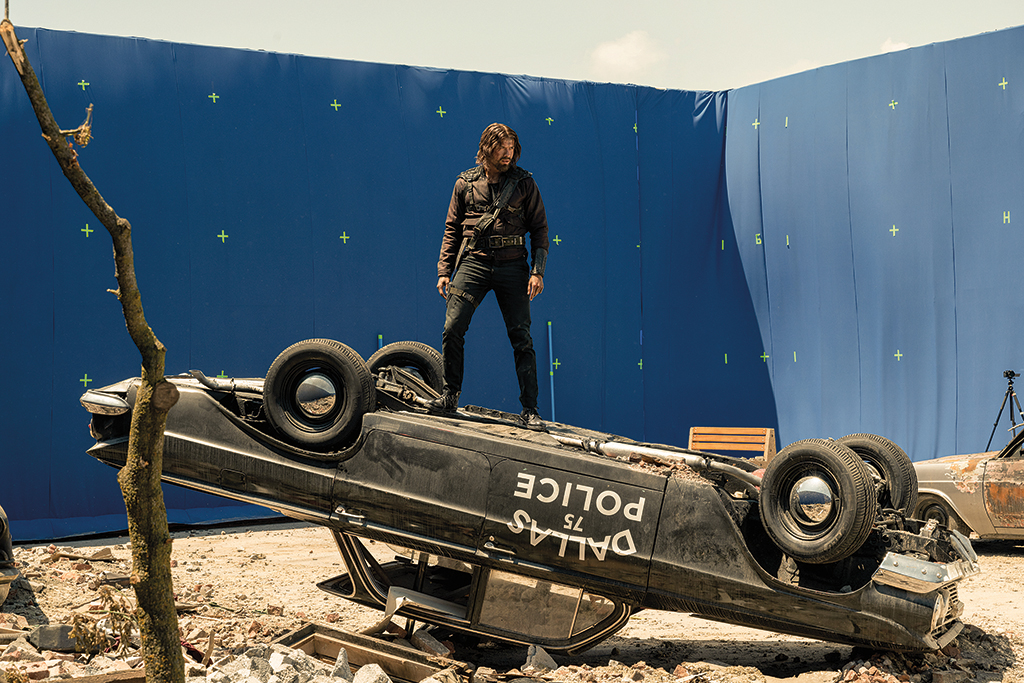
Classic on-set VFX duties on The Umbrella Academy included managing bluescreen shoots and other effects plates. (Photo: Christos Kalohoridis. Copyright © 2020 Netflix)
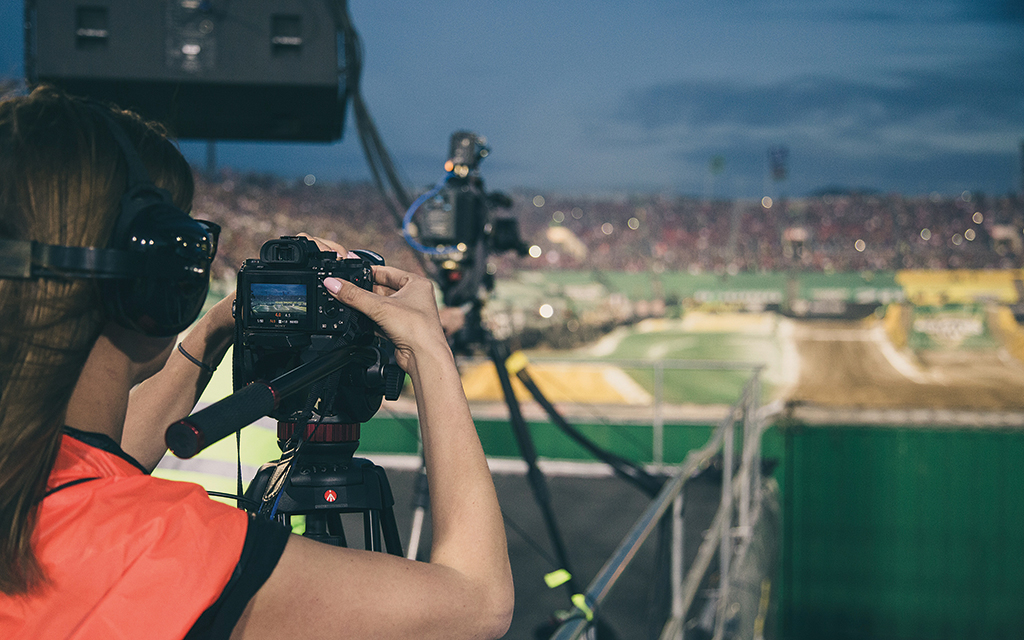

DRONES, FLYING ANDROIDS AND CREATURE FX ON RAISED BY WOLVES
For Raised by Wolves, on-set Visual Effects Supervisor Sean Stranks, who collaborated with Production VFX Supervisor Raymond McIntyre Jr., spent considerable time on location in South Africa. He says aerial shooting became a vital part of the on-set work, since the main character, Mother, often headed skyward.
“There was a day where we needed to shoot some drone plates for a shot of Mother flying, and we wanted to do some big orbits around to find the best way to shoot her. So I put a big white tracking ball on the top of my drone about the size of a grapefruit. Then the drone guys would follow me as if my drone was Mother flying through the air. As long as they could see my tracking drone, they had something to shoot towards – that was an absolutely fun day.”
Raised by Wolves also features a number of creature shots; these were predominantly realized with a stand-in suit performer to aid in actor integration and eyelines. Stranks had to ensure what was acquired on set would work for the final CG creature shots.
“We had a great performer who was very nimble; he was able to move around but he wasn’t as large as the creatures actually were. But what it did was get us some great camera reference. We shot him doing all this stuff, and then we shot clean plates within that same thing. Every shot is different when it comes to that kind of VFX. If you can have somebody come in and do those actions with the actors, it’s fantastic because it’s always tough to just pull it out of thin air otherwise.”
Every visual effects supervisor tends to have their own preference about what should go in their on-set kit bag. Amongst the common bag inclusions are, of course, DSLRs, iPhones and iPads for photography, data collection and even rudimentary LiDar; an accompanying plethora of apps; Ricoh Theta and Insta360 cameras for fast HDRIs; and a range of gray balls/light probes and color charts. Here’s what else our four VFX supervisors suggest are must-haves when working on set.
Charlotta Forssman: “Having a GoPro has saved me so much sometimes when it comes to reflection passes. I had a recent show that I went on and we were shooting these driving plates, and when we shot the greenscreen we saw the rear-view mirror. It would have been a whole thing to turn the cameras around and shoot it. So I was able to just stick a GoPro on the side of the mirror and shoot really nice reflection plates.
“And then there’s clothing: don’t get cold. I remember one time I was on set very early on, and it was one of the coldest days in New York City, and I was freezing, and the DP was like, ‘Visual effects supervisors are always a little underdressed,’ and I will never forget that. And I am always prepared for snow – extra socks and all that stuff so that I’m never the VFX supervisor who is underdressed.”
Jesse Kawzenuk: “The most valuable item in my kit is my belt, a simple first AC pouch that holds my iPad, tape, pens, small slate for photography, disto – everything. Some wranglers try to fit it all in their pockets or go minimalist and it just doesn’t work. Back when I was a VFX PA, a supervisor asked me for a piece of tape and I responded, ‘One second, it’s back on the cart,’ and by the time I had returned with the tape, he had already found it elsewhere. He looked at me and said, ‘Don’t let me catch you without tape ever again.’
“To this day, if VFX is on the board, the belt goes on. Sets can often resemble a battle-ground; it moves fast and no one has time to
wait. You want to be prepared for anything at any time. VFX requires you to be thorough on the day because that particular set/prop/ actor may not be there tomorrow.”
Adam Rowland: “Ordinarily, throughout the shoot we compile a FileMaker database of all the VFX shots and camera information. I have also used an app called ZoeLog. It’s very simple and is basically an online system for recording camera sheets. At any point anyone with access can view the camera database on their phone or iPad and see all of the information for a particular slate. It can also all be downloaded as a PDF or an XLSX and transferred straight into FileMaker.
“It removes the need to be constantly liaising with the camera team for data, and frees you and your wrangler up for more useful work. In these times when we’re attempting to reduce contact between crew, it’s a really useful tool. However, it does rely on the camera team agreeing to use it, and in my experience, they can be pretty old-school and a little reluctant to relinquish their notepads! (Meanwhile, I don’t think it is possible to overstate the importance of thermal underwear and a decent pair of boots.)”
Sean Stranks: “I’m really into drones, and so what I did a lot of the time with some of the larger sets on Raised by Wolves is I would just shoot from my drone photogrammetry of a much wider area in case we couldn’t do a proper LiDar. I would orbit the drone around and capture as much photography as possible. The camera on my drone is very good so the images are quite high-res. You can then literally PhotoScan the stuff together and just build a scene and go, ‘Okay, I understand where everything is now.’
“We had a lot of small sets that would come up and disappear in a couple of days. Sometimes they would move things into place, shoot it, and then it would be torn down in a couple of days because they need the area for something else. So we would always try to PhotoScan those as well as we could.”
